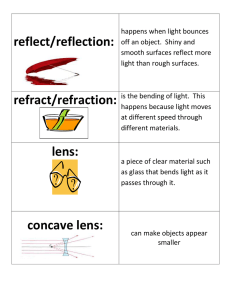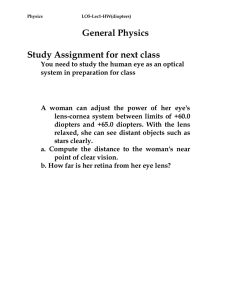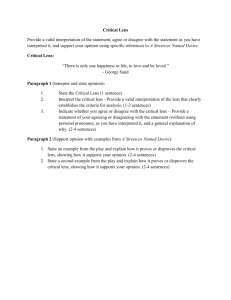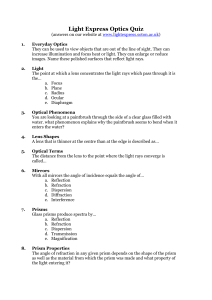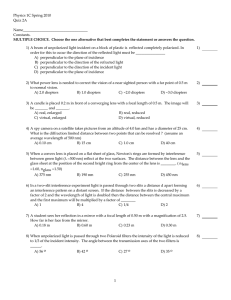Tecnología Óptica 1 UNESCO
advertisement
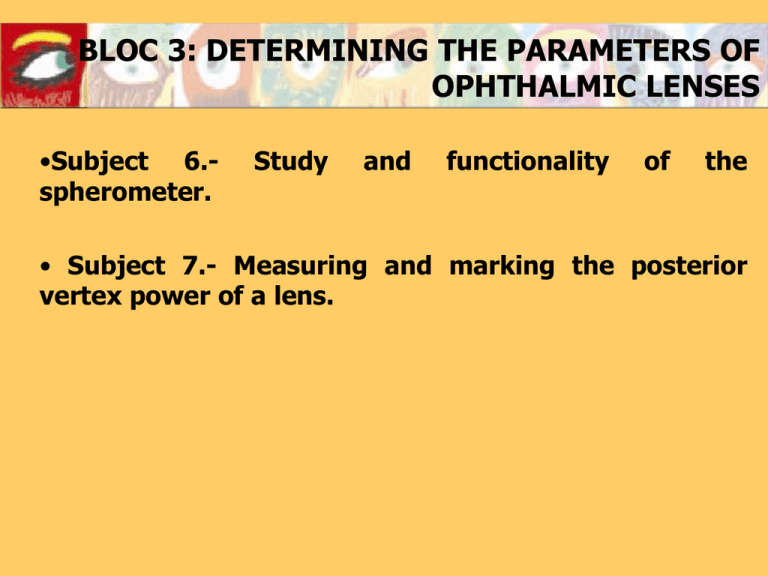
BLOC 3: DETERMINING THE PARAMETERS OF OPHTHALMIC LENSES •Subject 6.spherometer. Study and functionality of the • Subject 7.- Measuring and marking the posterior vertex power of a lens. Subject 6:Study and function of the spherometer. • • • • Description of the spherometer Functional principals Zero Error Index Error Description of the Spherometer • Instrument that measures the surface power (D) associated with the lens surfaces. Functional Principle • Supporting the legs on the lens surface, the movement of the center leg, is translated to the scale, giving the value of the surface power of the surface. Positive value in convex surfaces. Negative value in concave surfaces. Zero error •Adjustment or Calibrating the instrument to zero: •When placing the instrument on a flat polished surface, the scale must mark 0.00 D. •If not, all previous measurements will be affected by this value. •The measurement will be a result of the following equation: Pe Pesf P sup Psur: Value given by spherometer when place on flat surface. Psph: Value given by spherometer when placed on one of the curved surfaces of the lens. Index Error • The spherometer reading in diopters is only valid for one index of refraction • The majority of spherometers are calibrated for the n of crown glass (1,523) n ' 1 P' E PE n 1 P’E: real surface power of the lens PE: reading given by the spherometer scale n`:index of refraction of the problem lens n: index to which the spherometer is calibrated
